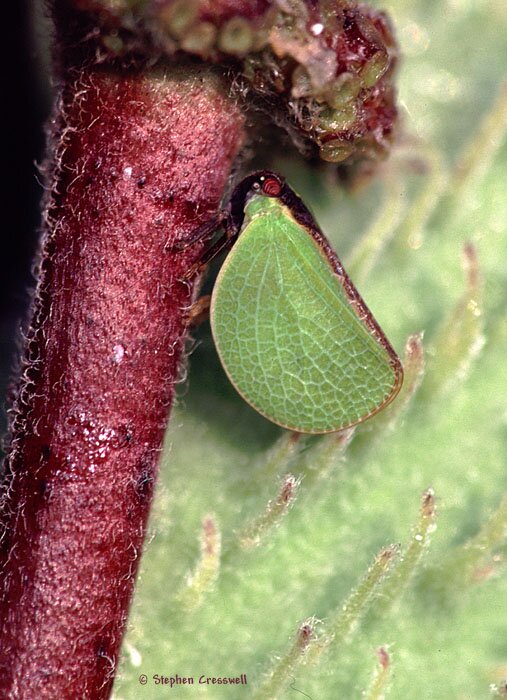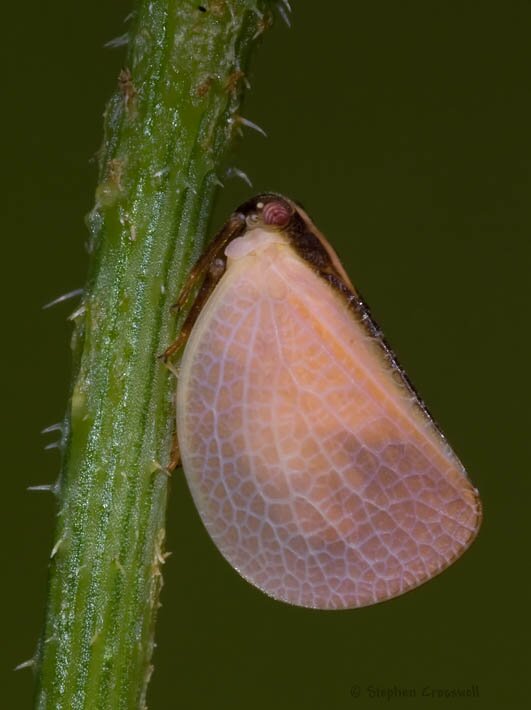
Family: Acanaloniidae
Subfamily: None defined in Acanaloniidae
Length: about 7 mm
Among the many food plants of Acanalonia bivittata are Black Walnut, Garden Balsam, Blueberry, Cranberry, and various Goldenrods.

Left: This Two-striped Planthopper is on the stem of Common Milkweed (the pod is in the background). Note the network of veins, which resemble the veins of a small leaflet.
Researchers at Southern Illinois University studied the life history of Acanalonia bivittata in both field and laboratory (Wilson and McPherson, 1981). They reported that the species has one generation per year and that it probably overwinters in the egg stage.
In the laboratory, they reared the planthoppers on Green Beans and on Black Walnut leaves, and eggs were laid on those two plant surfaces. Only 29% of the eggs hatched, taking on average 148 days to do so.
The average time spent in each nymphal instar were: 12.7, 9.3, 12.0, 11.8, and 18.4 days (first through fifth instars respectively). The total development time from egg to adult was an average of 212 days.
As in other related species, the nymphs produce a considerable number of wax plumes from glands at the rear of the abdomen. The wax may serve to prevent desiccation, or to prevent the nymph from becoming coated in its own sweet and sticky waste products made up largely of dilute plant sap.

Right: Though usually green so as to look like a young leaf, Acanalonia bivittata is sometimes pink in color.


